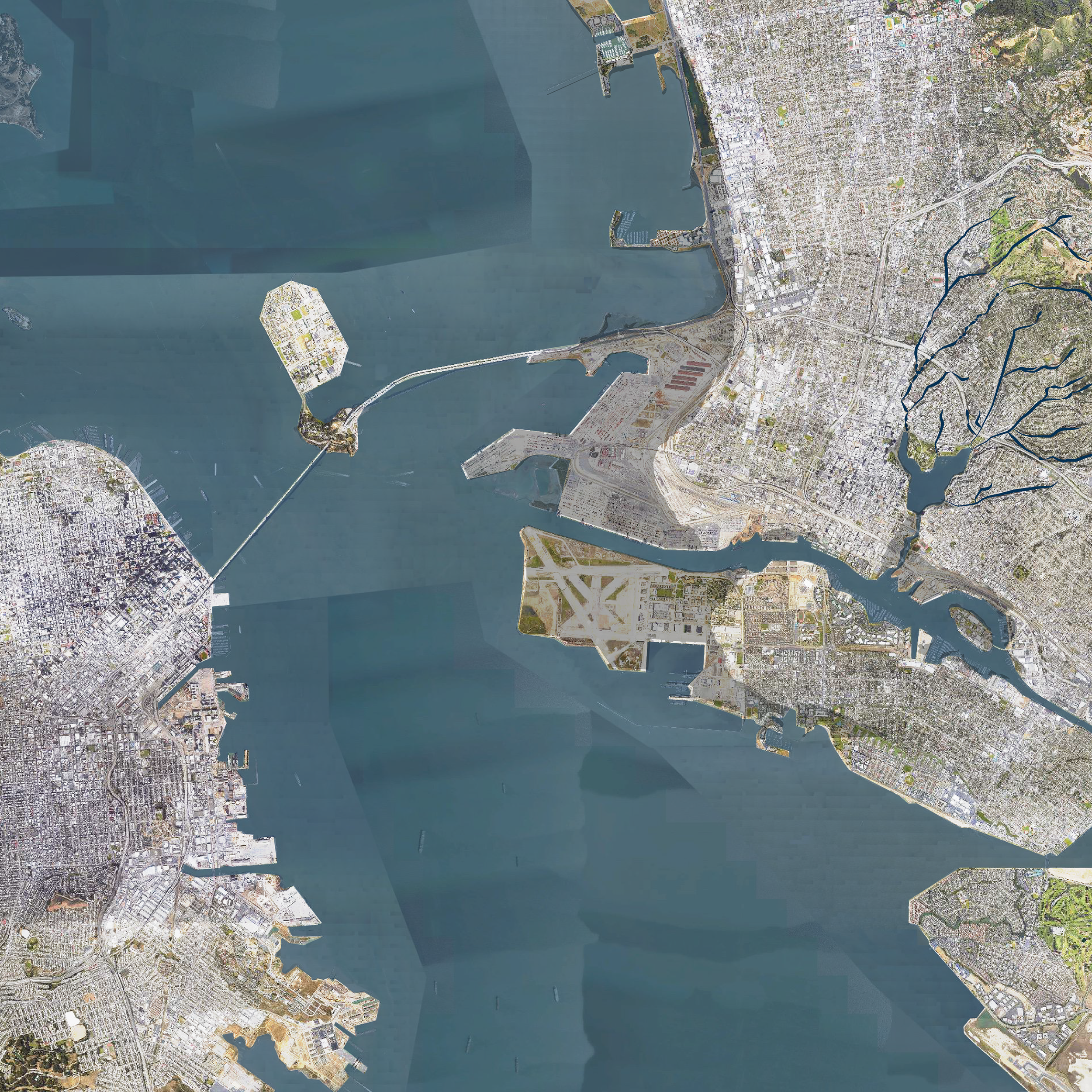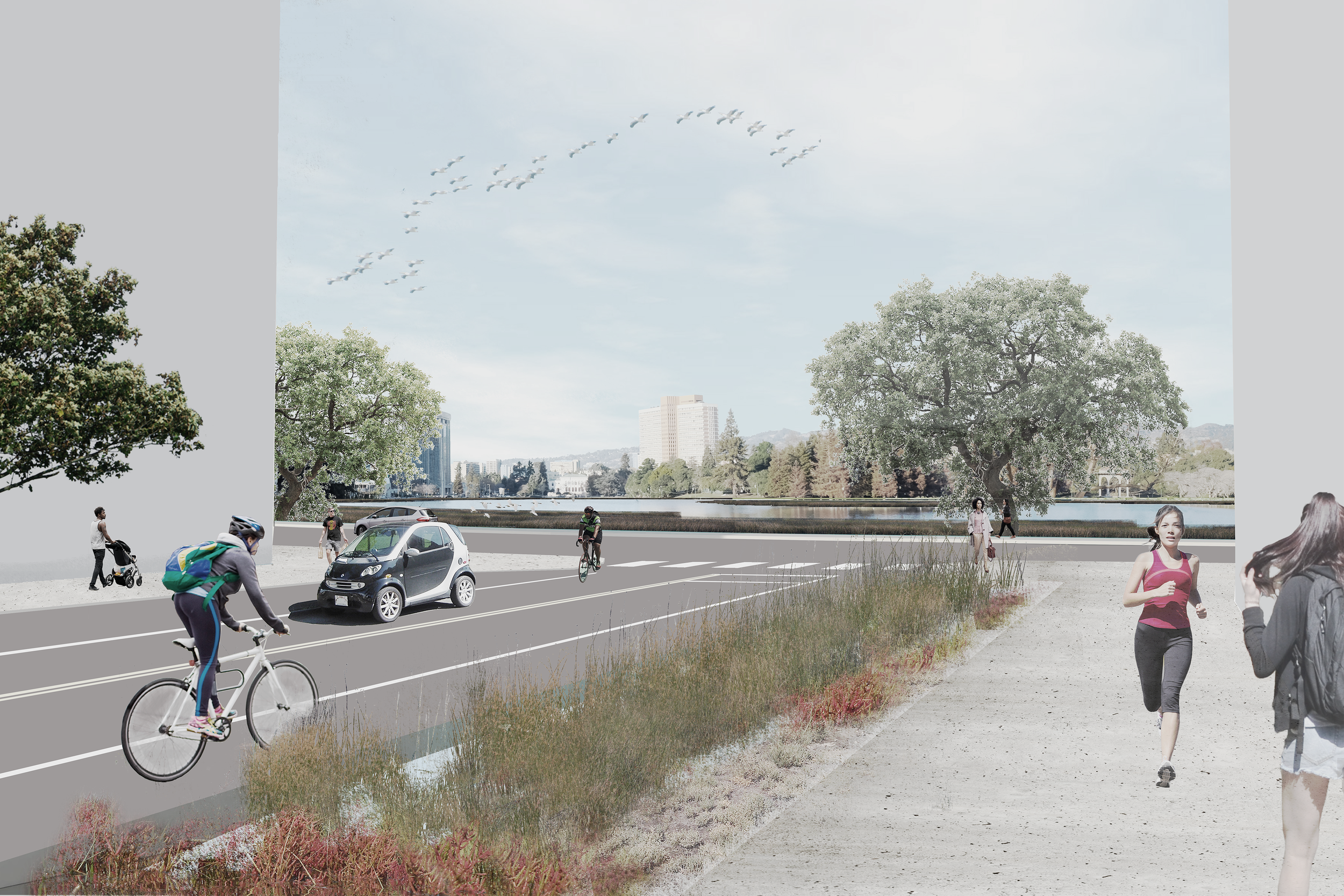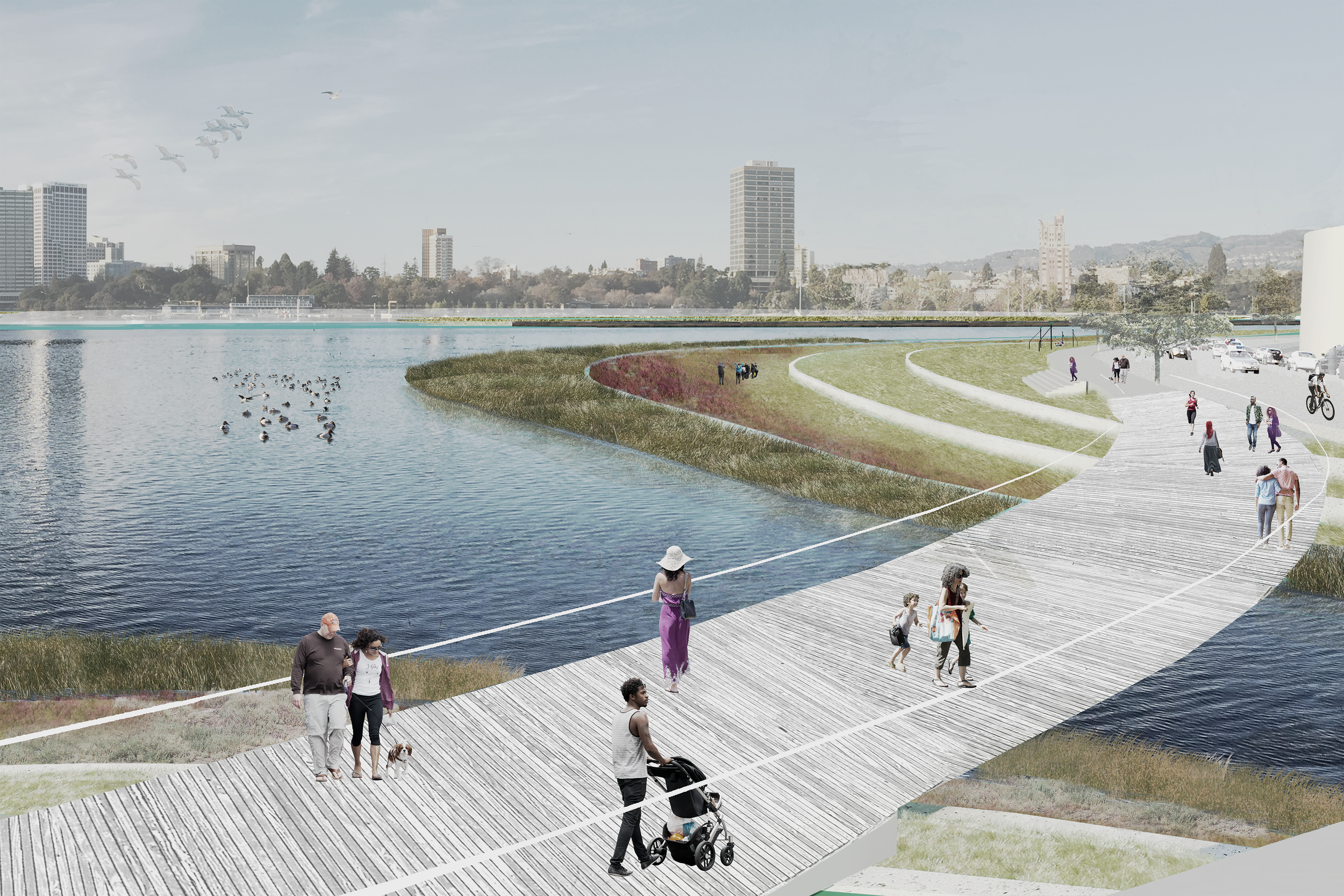Concave//Convex
Shaping Oakland's Strategy for Adapting to Sea Level Rise
Cristina Bejarano, Myra Messner
The neighborhoods surrounding Lake Merritt in Oakland, California represent a diverse cross section of cultures and socioeconomic status. While Lake Merritt is a valued social public space, it has major ecological challenges as a result of past decisions that cut the former estuary off from its tidal influence and turned it into a City Beautiful reflecting pool. Our goal was to update this strategy from using water as a mirror to a landscape that delineates change over time.
Our study of the surrounding topography revealed the existing site armatures and led us to codify the perimeter into concave and convex forms in the landscape. Conceptually, convex forms step down into the lake in the form of terraces. Concave areas around the lake reach into the city in the form of canals.
Terraces act as a framework for the marsh to grow along the lake edge, and for public programming along the higher elevations. Tidal inundation determines the boundary between the marsh ecosystem and public space. Pickleweed is one actor that signifies the edge, as its vibrant red hue shifts up the terraces over time with rising sea levels.
Canals convey stormwater and greywater from adjacent properties to balance increased salinity from sea level rise. They mimic the dense network of historic streams and reveal the armature of freshwater conveyance from the city into the marsh.
Ultimately, the park design reveals changes over different time frames. Visitors will see these daily tides and witness a larger connection to the bay, knowing that later generations will experience different versions of this marsh as sea levels rise. This design aims to change the attitude of sea level rise as a calamitous event to a part of everyday life.
This new type of floodable urbanism is designed to protect the city while also providing continuous public spaces for equal access and serving as a structure for estuarial habitat.






